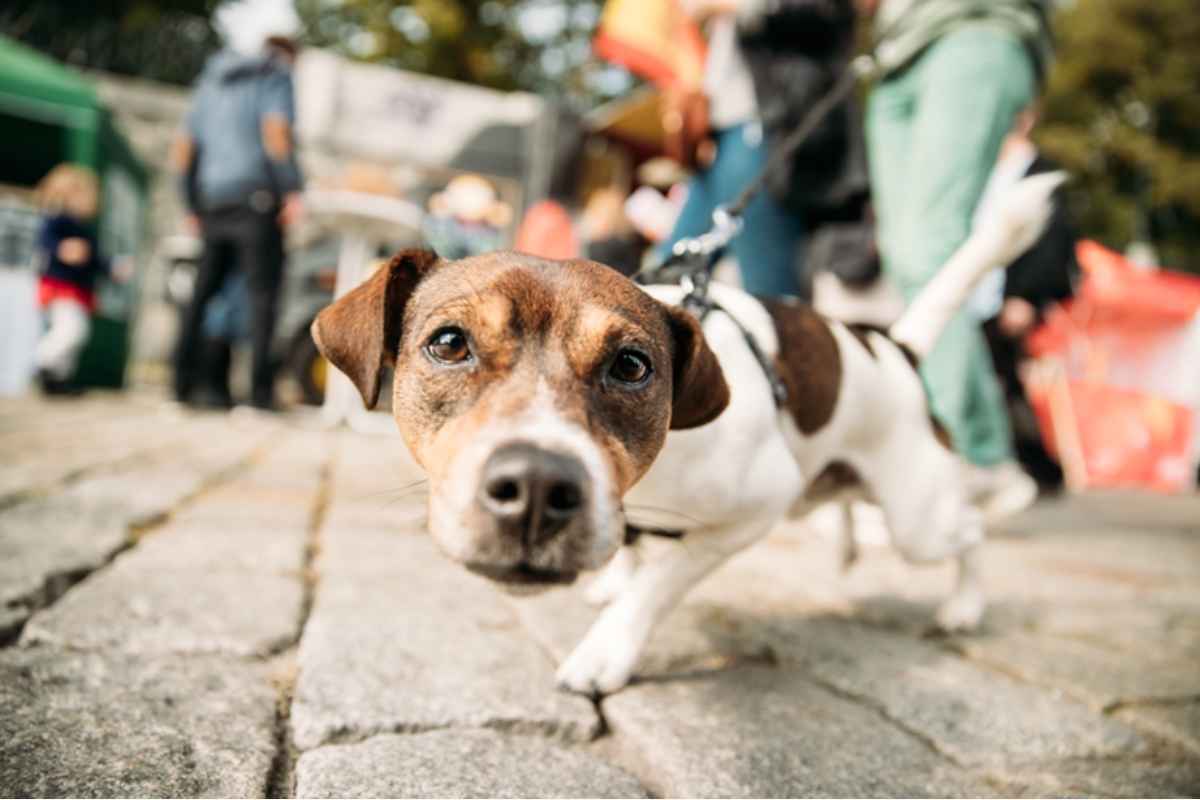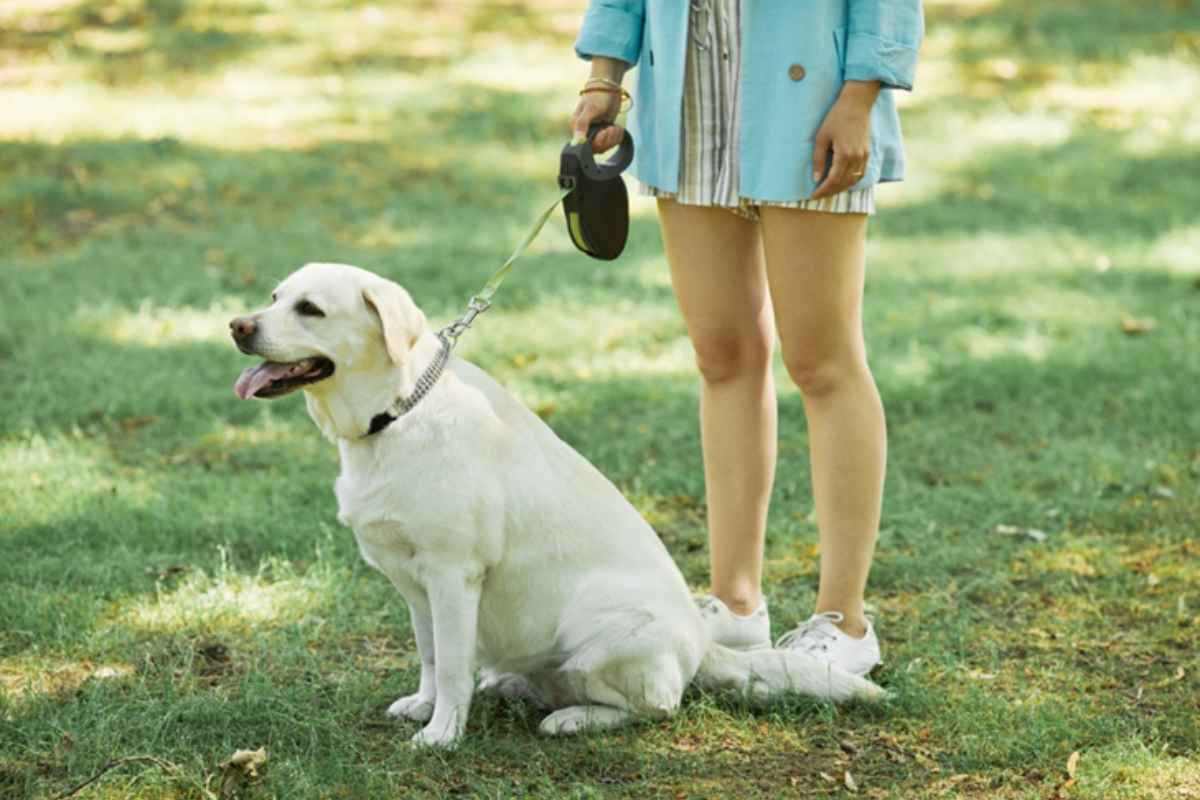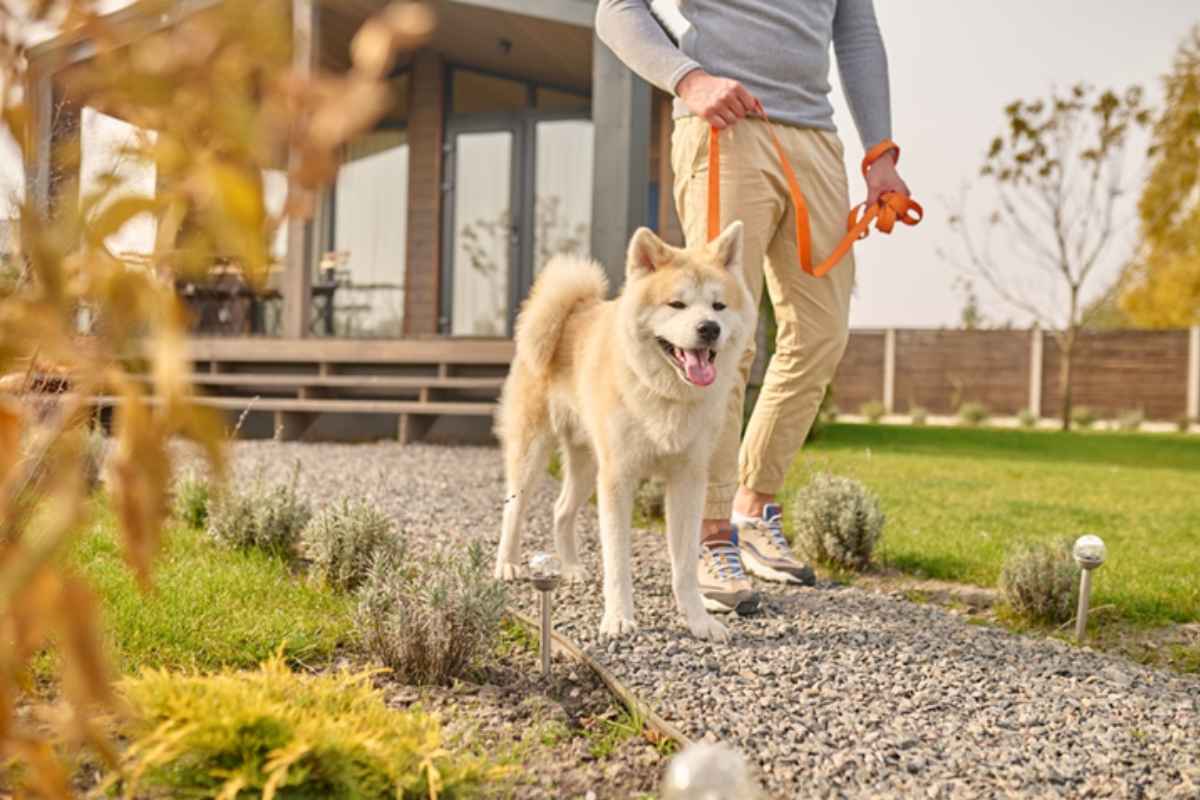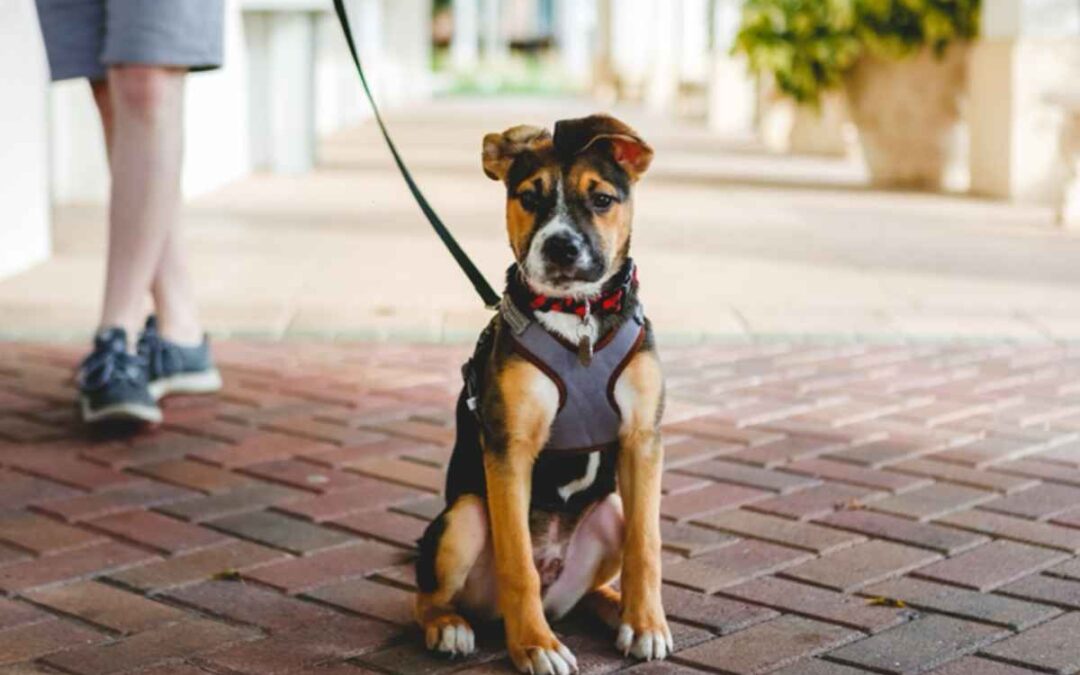Being able to walk your dog on a leash safely opens up a whole new world to both of you. Having a well-mannered dog who can walk calmly and efficiently on a leash allows you to exercise and get fresh air together, take them with you places, and experience new things together. It also has benefits such as reducing dog boredom and obesity. Walking your dog can also be a stress reliever for you! But a dog that pulls, chokes itself, or refuses to move forward is frustrating for the dog and the owner.
Leash training is usually the first and most important cooperative task that dogs and owners learn together and will follow them for a lifetime. It’s also a great way to keep you in shape and lower your risk of high blood pressure, high cholesterol, and Type 2 diabetes, to name a few. Here are some tips for ensuring your pet, whether a puppy or an older dog you just adopted, can enjoy exploring the world together.
Training Starts with the Right Equipment
The right equipment can make a difference in successfully leash training your dog. Here are the types of equipment you’ll need and what you need to consider when choosing what’s right for you and your dog.

How to Choose the Right Collar
The type of collar you need depends greatly on the kind of dog you have and his behavioral traits. Some might need a body harness, while others might require a muzzle harness when walking. Always remember that your dog should only wear a collar when supervised.
Standard Collars
This is the most common type of dog collar and is simply a strip of nylon or leather that fastens around the dog’s neck. Dogs with sleeker necks and heads may easily slip out of these collars. Standard collars are an excellent choice for securing tags on your dog.
Head Halters
These fit over the dog’s head and nose, which keeps their focus on you vs. following their nose. When dogs pull forward, the nose loops pull its head toward you. Head halters give the leader more control, especially on dogs that tend to choke themselves by pulling on standard collars.
Body Harness
An excellent option for smaller breeds, body harnesses keep pets from getting airway damage if they pull on the leash. These are also great if your dog can easily slide out of standard collars. However, they can make your dog more prone to pulling on the leash because they don’t feel tension around the neck.
Martingale Collar
A Martingale collar is a double-looped collar that tightens when a dog pulls. But it has a catch, so it only tightens enough to be uncomfortable. This reminds the dog that they are pulling and should correct their behavior, but without the danger of over-tightening. These are best for dogs with slender necks or smaller heads.

How to Choose the Right Leash
The only dog necessity more important than collars is leashes. You may choose to have several types of dog leashes to use for different purposes. The leash you select needs to be sturdy enough not to break when the dog pulls on it. It also needs to fit comfortably in your hand. Skinny leashes can easily glide right through your grip if pulled on.
Standard Leashes
This is the old-fashioned, you’ve-seen-them-a-million-times type of leash. Basically, a looped end with a clip on the other end that clips to a collar. They typically come in sizes from 4-8 feet, with 6 feet being the most common. These come in a wide variety of styles and materials. These are great for basic training and everyday use.
Retractable Leashes
Before retractable leashes came along, dog owners would wrap the leash around their hands to have more control over the length. A retractable leash is coiled up inside a compartment, allowing you to easily let out or bring back the amount of leash you need. However, most veterinarians and dog trainers recommend that you don’t start on a retractable leash. Your dog should be proficient and controllable on a standard leash before moving to a retractable one.
Four Easy Steps to a Leash-Train Your Dog
The magic is in the order in which you train your dog to walk on a leash. Each step provides reinforcement and skills needed to move on to the next.
Step 1: Get your dog used to the collar and leash
Try this at home to begin your training, not at the dog park or out in public. Start by putting the collar on and letting your dog get used to it. Let them run around in it, roll on the carpet in it, and reward them with treats and praise when you get them to stop fighting their new collar.
Step 2: Start by walking indoors
This helps Fido get used to being on a leash and collar in a safe, familiar environment. Once they walk without pulling, give them plenty of treats and “attaboys.” This is also the perfect time to work on other commandments, like “sit” and “stay.” It’s also recommended that you play a little fetch or play with your pet, so they’re tired before leash training begins.
Step 3: Walking in the great outdoors
Now that your pup is used to the equipment, it’s time to see how they’ll do outside. You’ve had time to learn which collar and leash ensemble work best, and now it’s time to see how your dog performs with the many distractions in the outside world.
Step 4: Teach them to walk by your side
To teach this skill, use a short leash. Encourage your dog to stay near you with treats and praise. The goal is to be able to loosen the leash but to have your dog remain by your side. It’s essential to be patient and highly profuse in your praise when your dog does well.

Leash Training Is Never Completely Finished
Dog training is a constant process of refinement. Once you and your pet have the leash and collar routine down, it’s time to repeat it in many different settings and places. For instance, you can combine leash training with stranger training or get your dog used to a neighborhood cat because you’re in control.
Some final tips for success include keeping your training sessions short. Don’t start out expecting your dog to walk two miles with you. Another is to be consistent. It’s never okay to pull on a leash, even if they see a furry friend at the dog park they want to greet. Make sure you ask your dog to sit and wait patiently while you put on his leash. That ensures his focus is on you before you head out the door. Finally, keep at it. If you don’t walk regularly, you and your dog will become rusty on the proper protocols.
Like any facet of dog ownership, leash training requires structure and consistency. No shortcuts, training gimmicks, or magic products will make rude behavior on a leash miraculously disappear. Only love, training, and time will do that.
Does Leash Walking Make Your Dog Anxious?
Our vets at Jacksonville Community Pet Clinics can look for physical reasons your dog might be uncomfortable on a leash. If so, there might be a medical reason for that. We can also discuss emotional reasons, such as fear of strangers or discomfort with other dogs, that might lead to bad behavior and how we can advise you to help your dog overcome them.


